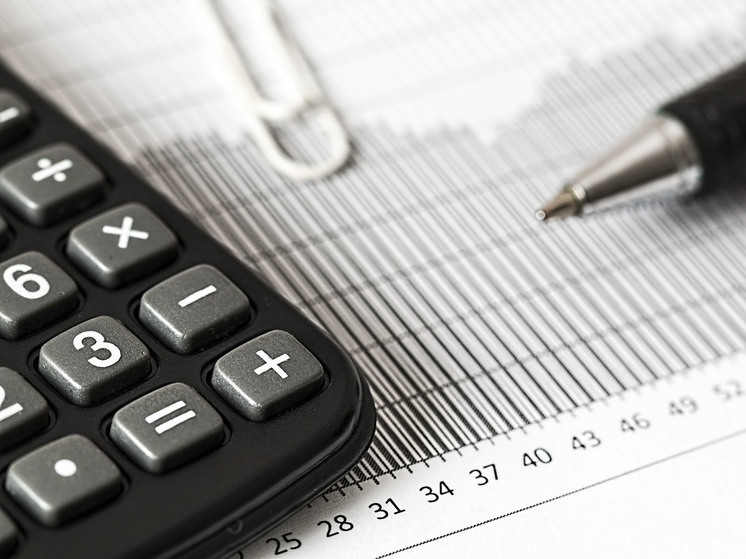Experts argued about the impact of the withdrawal of funds by investors on the country's economy
Last year, the outflow of capital from Russia reached 13.5% of GDP and amounted to a record $243 billion. Notes of the Center for Macroeconomic Analysis and Short-Term Forecasting (CMASF). According to experts, such a high figure is due to the economic shock that the country experienced in 2022, changes in the model for financing foreign trade processes and the transfer of funds by citizens to foreign banks.
 Photo: Pxhere.com
Photo: Pxhere.com
The CMASF identified four key channels through which funds were withdrawn from Russia. Most of all — $ 66 billion — was sent abroad in connection with the repayment of trade loans and for the payment of advances. The process of export crediting has passed to Russian financial institutions. After February 2022, most of the imports began to be supplied to domestic companies on various types of prepayment.
Slightly less funds were allocated by Russian banks and companies to foreign creditors to repay loans and borrowings — $62 billion. In third place are operations of individuals. Their share in the total capital outflow amounted to $47 billion, of which $33 billion came from deposits in foreign banks and another $14 billion from the purchase of foreign currency in cash. In last place was the result of transactions for the acquisition of Russian assets owned by foreign companies, that is, the process of withdrawing foreign direct investment: the withdrawal of $40 billion is associated with it. a factor of pressure on Russia from unfriendly countries,” says Mikhail Zeltser, an expert on the stock market at BCS Mir Investments. — There is also the capital factor of repatriates who left the country after the SVO and the autumn mobilization. Nevertheless, the outflow did not go unnoticed, and, for example, it played one of the main negative roles in the devaluation of the ruble.”
It is curious that the opinions of experts on the impact of the withdrawal of funds abroad on the country's economy are divided. Most analysts consider this process to be negative. “The outflow of capital, which amounts to 13.5% of the country's GDP, is a test of the stability of the Russian economy, as these are very high volumes,” said Vladimir Chernov, an analyst at Freedom Finance Global. “The total amount of capital outflow from Russia in 2022 was 41% higher than in the crisis year of 2008 and 32% higher than in 2014.”
The record outflow of capital means a decrease in investment both in the real sector of the economy and in financial markets. These funds could be used to modernize or expand production facilities. In general, the outflow of foreign investment and capital from the Russian Federation is primarily reflected in the country's economic growth: it is slowing down, Chernov emphasized.
However, there are experts who dispute this view. “Foreign investors constantly pumped out all the profits from Russian subsidiaries abroad,” Artem Tuzov, director of the corporate finance department at IVA Partners Investment Company, enters into a dispute. They used various options for tax optimisations, that is, they tried to pay less money to the Russian budget than was required in the normal course of business, and in general, they underinvested in assets in Russia. Domestic investors will not be able to do this, so for the economy there are only pluses from this, Tuzov is sure.
But experts showed unanimity in their forecasts of further capital outflow. Not all funds were able to flow out of our country last year, so this year we can also expect high volumes of capital outflow. According to Chernov, sales of foreign companies doing business in the Russian Federation continue in 2023, so the volume of outflow of foreign capital that flows through this channel can be very high.
The process of outflow of foreign currency deposits abroad also continues. As the head of the analytical department of the BKF Bank Maxim Osadchiy pointed out, during the period of the special operation, from February 2022 to June of this year, foreign currency deposits of citizens in Russian banks decreased by almost half — by $43.9 billion (or by 49.2% to $45.3 billion). as of July 1, 2023), while foreign currency deposits of Russians in foreign banks increased over the same period by almost the same amount — by $42 billion (up to $73 billion).
A lot of money can be taken out and «to pockets”: as of July 1, 2023, Russians had foreign currency worth $96 billion under their pillows — $12.3 billion more than on February 1, 2022. “Many Russians buy apartments abroad,” said investment adviser Yulia Kuznetsova. “The main destination at the moment is Dubai.” In her opinion, the trend for the outflow of private capital will continue until the end of the SVO.


